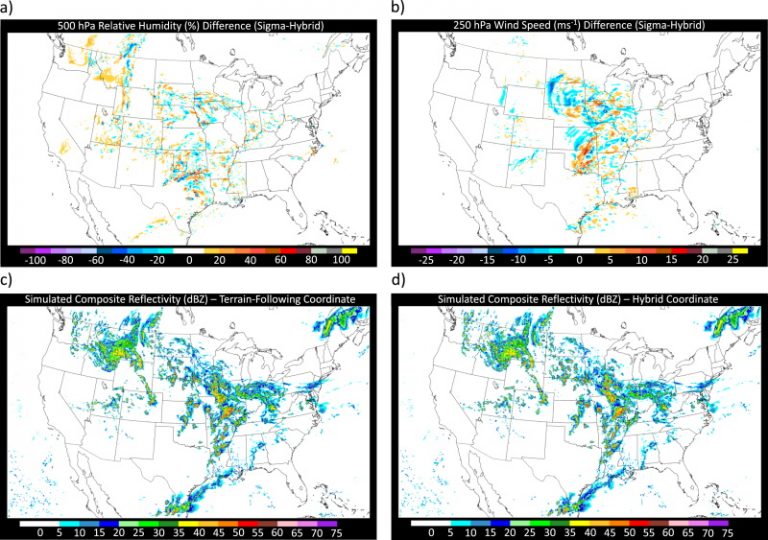
WILLIAMS – An Evaluation of a Hybrid, Terrain-Following Vertical Coordinate in the WRF-Based RAP and HRRR Models
Jeffrey Beck, John Brown, Jimy Dudhia, David Gill, Tracy Hertneky, Joseph Klemp, Wei Wang, Christopher Williams, Ming Hu, Eric James Jaymes Kenyon, Tanya Smirnova, and Jung-Hoon Kim
Article first published online: 15 MAY 2020 Weather and Forecasting
ABSTRACT: A new hybrid, sigma-pressure vertical coordinate was recently added to the Weather Research and Forecasting (WRF) Model in an effort to reduce numerical noise in the model equations near complex terrain. Testing of this hybrid, terrain-following coordinate was undertaken in the WRF-based Rapid Refresh (RAP) and High-Resolution Rapid Refresh (HRRR) models to assess impacts on retrospective and real-time simulations. Initial cold-start simulations indicated that the majority of differences between the hybrid and traditional sigma coordinate were confined to regions downstream of mountainous terrain and focused in the upper levels. Week-long retrospective simulations generally resulted in small improvements for the RAP, and a neutral impact in the HRRR when the hybrid coordinate was used. However, one possibility is that the inclusion of data assimilation in the experiments may have minimized differences between the vertical coordinates. Finally, analysis of turbulence forecasts with the new hybrid coordinate indicate a significant reduction in spurious vertical motion over the full length of the Rocky Mountains. Overall, the results indicate a potential to improve forecast metrics through implementation of the hybrid coordinate, particularly at upper levels, and downstream of complex terrain.
Read the full publication at Weather and Forecasting.